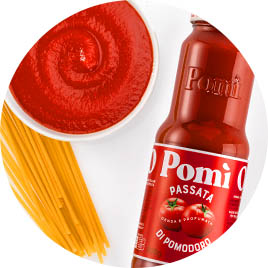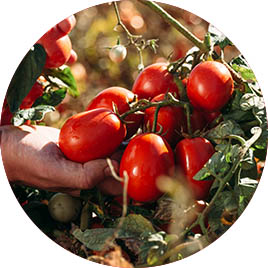5 Secrets for Making the Perfect Tomato Sauce
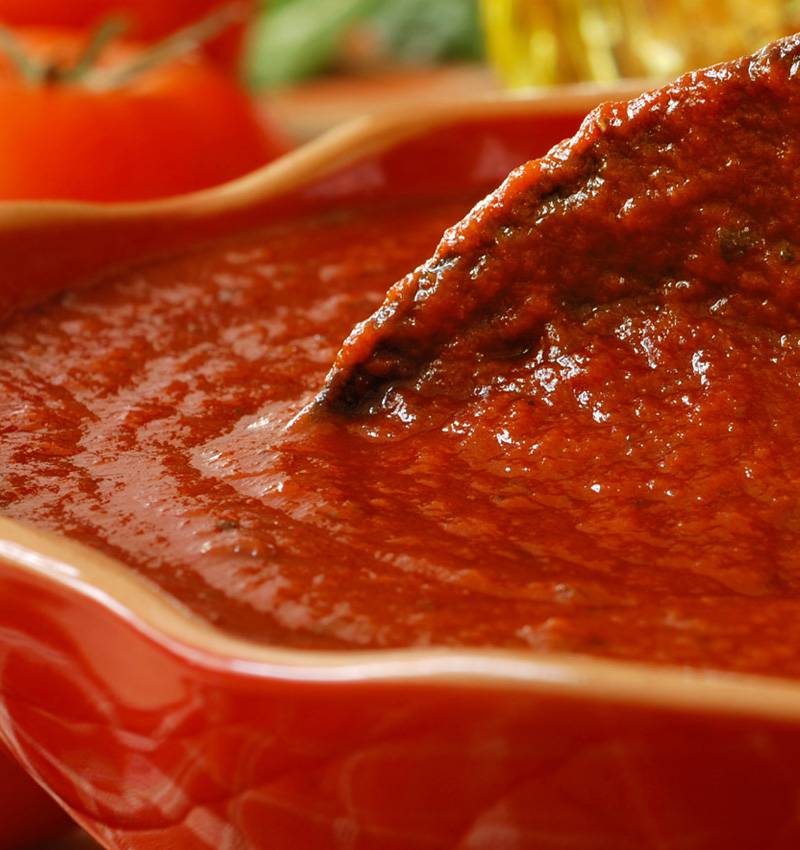
Tomato sauce, also known in Italian as passata, is an essential element in Italian cuisine.
Preparing the tomato sauce flawlessly, however, requires a lot of attention to detail. This tasty condiment can be ideal for a wide variety of dishes: from the classic Italian Spaghetti al Pomodoro to irresistible meatballs with tomato sauce. But here's the real challenge: how do you make a sauce with tomato passata that is balanced and tasty? By following these simple five secrets, you’ll finally be able to delight your diners with the result.
How to choose the right Pomì product: classic passata, rustic passata or diced tomatoes?
Your choice of Pomì product depends on the type of consistency you want: classic passata, for example, is smooth and thick, perfect for obtaining a velvety taste. Rustic passata, however, contains whole pieces of tomato which give the sauce a more rustic texture, and a higher content of fresh tomato pieces. Finally, diced tomatoes give you the option of having clearly visible pieces of tomato in the sauce.
You can choose the Pomì product based on the result you want to achieve, i.e. the type of recipe you are making. Pomì diced tomatoes, for example, are ideal for seasoning dishes in which a certain type of consistency is required: the pulpy texture of the diced tomatoes is actually maintained throughout cooking.
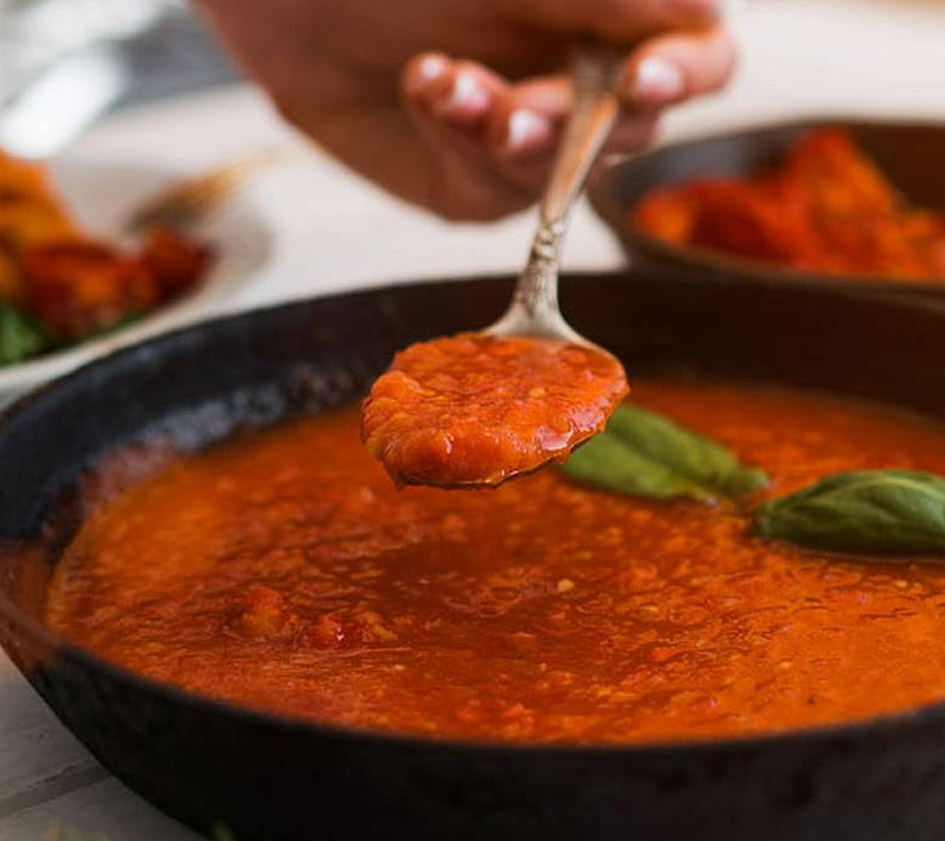
The cooking temperature for the sauce
The cooking temperature for tomato sauce is often underestimated, but it is actually essential for the flavours to develop to the fullest and to get a perfect consistency. Start by cooking the sauce over medium-high heat for a few minutes to allow any excess water to evaporate. But remember not to overcook it.
Once the sauce has reached a simmer, turn the heat down to low and continue cooking slowly. This allows the flavours to blend together and the sauce to become thicker and tastier. A really simple - but effective - trick is to always keep the lid on, so as to preserve the aroma.
When do you add spices and herbs to the tomato sauce?
Herbs and spices are key ingredients to bring out the tomato, using them can actually give the dish an irresistible flavour. However, it is important to know when to add them in order to give our dish the desired aroma.
If you prefer a bolder flavour, you can add herbs such as basil, oregano or parsley towards the end of cooking. By doing so, the flavours will spread throughout the sauce without losing their fragrance. If you prefer a milder flavour, you can also add herbs and spices just before serving.
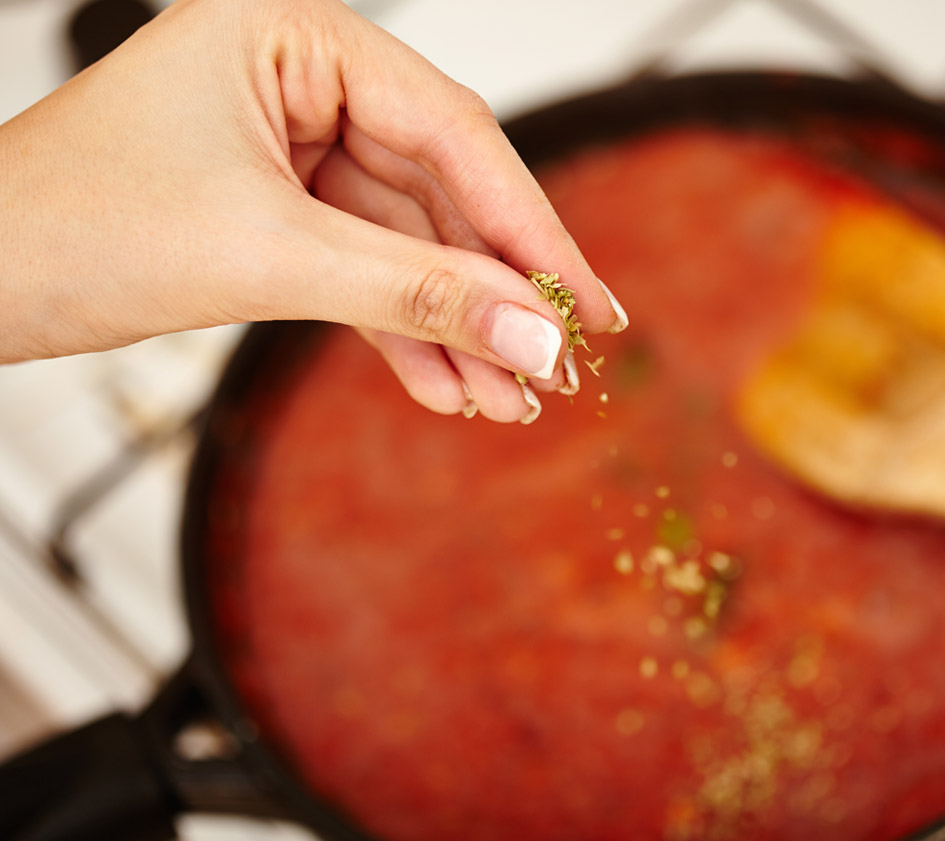
Cook over a low and steady heat with the lid on
Cooking the tomato sauce over a low and steady heat with the lid on is essential to obtain a pleasantly thick consistency. The lid keeps the moisture inside the pan, preventing the sauce from drying out too quickly. The low heat then allows the flavours to develop gradually, slowly softening the vegetables. Make sure that you check the sauce now and then to prevent it from sticking to the pan, but avoid removing the lid too often, to keep the temperature constant.
The cooking water
The cooking water is a secret that is often overlooked when making the sauce, but it can make all the difference to the end result. That's why when you drain the pasta, it's highly recommended to set some of the cooking water aside, so that you can gradually add it to the sauce as it is cooking.
The starch released by the pasta into the cooking water will help to thicken the sauce and create a creamy texture. Remember to use this method sparingly - doing so will allow you to control the consistency of the sauce and avoid the mistake of diluting the flavour.
Ready to serve?
Now that you have discovered these secrets, you’ll undoubtedly make a delicious tomato sauce that can win over even the most demanding palates. Get ready to amaze your diners with the unmistakable Italian flavour of Pomì!

